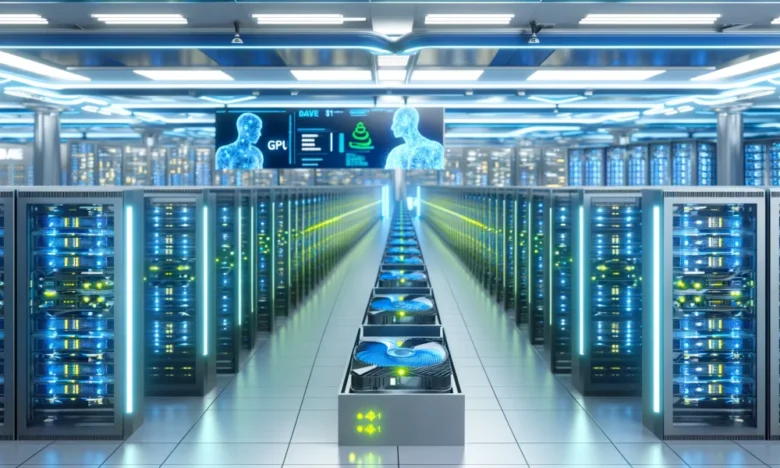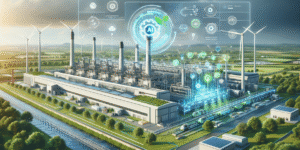Sustainable data centers must limit carbon emissions by purchasing green power through long-term contracts or investing in green projects on-site, using construction techniques that reduce waste, and installing energy efficiency systems to lower electricity consumption. Additionally, they can increase efficiency by using management software to shut off unnecessary IT hardware and equipment and installing efficient cooling systems like free cooling or liquid cooling that use water instead of air for server cooling.
1. Energy Efficiency
Energy conservation in data centers is of great importance to ensure sustainable operations, so many companies have made energy efficiency their top priority, including green building certification and carbon neutrality initiatives.
At its core, sustainable datacenter management entails minimizing long-term operational costs while simultaneously decreasing space and water requirements, electricity consumption, and carbon emissions. This goal can be met using environmentally friendly techniques like low-power servers with virtualization implemented, cooling systems optimized to manage temperature efficiently, and renewable energy integration as part of its practices. Some sites even use localized energy matching to maximize renewable energy use by purchasing power based on availability in each region, which helps mitigate fluctuations in demand while guaranteeing data centers continue to operate efficiently.
2. Climate Change
Data centers consume an enormous amount of electricity and water, contributing significantly to climate change. But sustainable data center operations can still take place without increasing costs or decreasing reliability. Energy efficiency measures are an effective way of lowering emissions. They include efficient hardware design, cooling systems like free cooling and liquid cooling systems, water conservation practices, and water use reduction strategies.
Transitioning to renewable energy sources is also key in meeting this objective. Microgrids and long-term power purchase agreements with renewable providers help ensure a steady source of green energy, while recycling programs divert materials away from landfills while decreasing overall energy consumption.
3. Water Conservation
Data centers are complex facilities that consume significant quantities of both electricity and water for operation and construction, creating substantial carbon emissions both directly and through their embodied energy costs. Sustainable data centers prioritize minimizing their energy and water consumption by employing energy-saving cooling technologies such as liquid and immersion cooling, renewable energies, and carbon offsetting programs.
Businesses today are adopting cutting-edge technologies that reduce carbon emissions, such as using machine learning to optimize how renewable energy is utilized and shifting computing tasks during periods when grid power is at its cleanest. Furthermore, businesses are taking measures to decrease waste generation through reuse, optimization, and responsible recycling practices.
4. Waste Reduction
Data centers that reduce waste during construction and operation help lower GHG emissions. By employing prefabricated components and efficient cooling systems, such facilities reduce energy requirements while diverting e-waste away from landfills. Utilizing renewable energy sources and adopting water conservation initiatives are two strategies that can reduce GHG emissions. Efficient power management may also assist data centers in allocating their electricity usage from carbon-free sources.
Compass Data Centers is pushing for a novel partnership between utilities and data centers, advocating that data centers help utilities forecast power demands in order to plan accordingly and avoid passing costs for grid upgrades onto ratepayers.
5. Recycling
Data centers generate significant quantities of electronic waste, with components like servers and hard drives breaking down quickly or becoming obsolete. Recycling these materials reduces disposal needs while providing the opportunity to reuse raw materials in new equipment.
Sustainability measures for data centers include energy efficiency and carbon reduction measures. Utilizing server virtualization technologies improves hardware utilization rates while decreasing energy consumption; adopting renewable energy reduces carbon usage; microgrids with energy storage solutions allow data centers to become more independent from the grid; and finally, energy-efficient cooling systems further decrease both power usage and water consumption.
6. Carbon Neutrality
Data centers consume and produce substantial energy usage and greenhouse emissions, so prioritizing energy efficiency, using renewable sources for powering data centers, and engaging in carbon offset programs are vital elements in mitigating their impacts.
Acquiring carbon neutrality requires significant cuts in greenhouse gas emissions from human activities and using carbon sinks to absorb them—helping protect the climate while mitigating environmental impacts without disrupting business operations. To become carbon neutral, data centers must prioritize energy optimization and sustainable practices across their operations—from site selection, power procurement, cooling, and water usage through to tracking performance benchmarks for betterment opportunities.
7. Co-Creation
Sustainable data centers can minimize their environmental footprint with strategies like energy-efficient equipment, renewable energy adoption, and waste reduction. This will enable them to meet today’s and tomorrow’s technology needs without compromising sustainability.
Co-creation goes beyond customer advisory boards or sales and marketing tactics: it involves working in harmony with customers to develop products or services that meet specific requirements. Unilever actively encourages innovative submissions using an ideation platform and competitions that reward participants financially.
8. Smart Grids
Data centers pose unprecedented power system challenges on a global scale, accounting for three percent of worldwide electricity use and carbon emissions¹—an estimate expected to more than triple by 2030.². Smarter systems are emerging to reduce energy usage while maintaining performance for IT equipment. Energy-efficient hardware, renewable energy adoption, and waste reduction help promote sustainability.
Data centers can reduce their environmental footprint further by taking part in carbon offset programs, which fund projects to decrease greenhouse gas emissions elsewhere and offset any of their own GHGs produced at the data center.
9. Security
Focused data centers that prioritize sustainability can reduce energy consumption and operational costs, while contributing to circular economies by cutting waste production, thus mitigating environmental impacts. Emission reduction strategies include adopting eco-friendly IT and cooling systems as well as renewable energy production. Carbon offsetting allows businesses to invest in projects that reduce or remove greenhouse gas emissions elsewhere such as reforestation or renewable energy production, further decreasing emissions.
Sustainable data centers can reduce long-term operational costs while minimizing space requirements by using advanced technologies and eco-friendly building materials. They can also leverage redundant systems for increased reliability, which ensures higher uptime rates and more predictable services for their customers.




